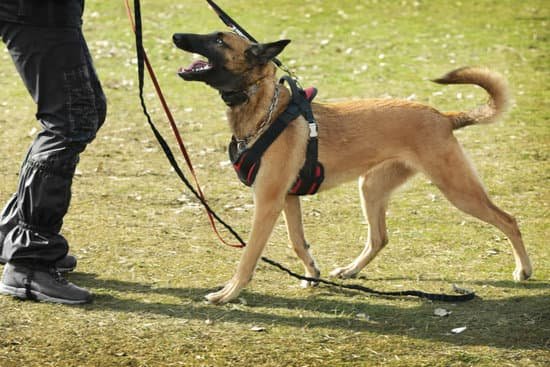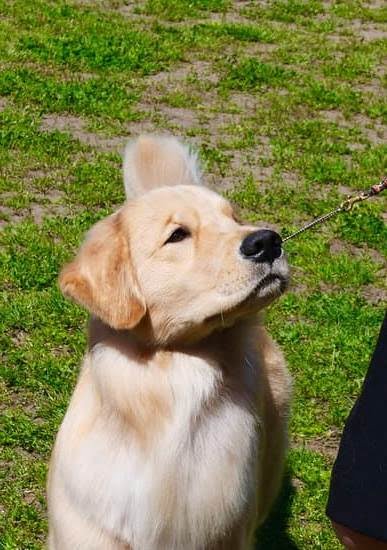Maltese dogs are known for their charming personality and affectionate nature, making them a popular choice for many pet owners. Understanding the Maltese breed is crucial in order to effectively train and care for these small, white furballs. In this article, we will delve into how to train a Maltese dog, focusing on their characteristics and temperament.
Maltese dogs are lively, playful, and intelligent creatures that thrive on human companionship. They are often described as gentle and loving pets who form strong bonds with their owners. However, they can also be prone to certain behavioral issues if not properly trained and socialized from a young age. This is why training plays a vital role in the development of a well-behaved Maltese dog.
Training a Maltese dog not only benefits the pet but also the owner. A well-trained Maltese is more likely to follow commands, exhibit good behavior, and develop a trusting relationship with its owner. Through consistent training methods, both the dog and owner can enjoy a harmonious relationship built on respect and understanding. Stay tuned as we explore the essentials of training a Maltese dog in this comprehensive guide.
The Importance of Training for Maltese Dogs
Maltese dogs are known for their charming and affectionate nature, making them wonderful companions for individuals and families alike. However, despite their small size, Maltese dogs can sometimes exhibit stubbornness or independent behavior if not properly trained. This is why understanding the importance of training for Maltese dogs is crucial for both the dog and owner.
Benefits for the Maltese Dog
Training provides mental stimulation and helps prevent behavioral issues that may arise due to boredom or lack of guidance. By engaging in training sessions, Maltese dogs can learn new skills, build confidence, and strengthen the bond with their owners. Additionally, training helps establish boundaries and sets clear expectations for the dog, leading to a harmonious relationship within the household.
Benefits for the Owner
For owners of Maltese dogs, proper training can make daily interactions more enjoyable and less stressful. A well-trained Maltese is more likely to respond positively to commands, making it easier to address any potential issues or concerns. Training also enhances communication between the dog and owner, fostering a sense of trust and mutual respect. Ultimately, investing time and effort into training a Maltese dog results in a happier, healthier pet and a harmonious living environment.
By understanding how to train a Maltese dog effectively, both the dog and owner can reap numerous benefits that enhance their relationship and overall well-being. Remembering that consistency and patience are key factors in successful training will set the stage for a rewarding experience for all parties involved.
Creating a Positive Training Environment
Maltese dogs are known for their affectionate and playful nature, making them a popular choice for many dog owners. However, like any other breed, Maltese dogs require proper training to ensure they are well-behaved and happy companions. Creating a positive training environment is crucial in setting the stage for success when it comes to training your Maltese pup.
One important aspect of creating a positive training environment is to establish a consistent routine. Maltese dogs thrive on routine and structure, so try to schedule training sessions at the same time each day. This will help your Maltese understand what is expected of them and make the learning process easier. Additionally, make sure to use positive reinforcement techniques such as treats, praise, and playtime to motivate your Maltese during training sessions.
Another key element in creating a positive training environment for your Maltese is to eliminate any distractions. Find a quiet and comfortable space where you can focus solely on training without any interruptions. This will help your Maltese stay focused and engaged during the training sessions. Remember, patience is key when it comes to training a Maltese dog, so take it slow and remain calm throughout the process.
| Aspect | Importance |
|---|---|
| Consistent routine | Helps Maltese understand expectations |
| Positive reinforcement | Motivates Maltese during training |
| Eliminate distractions | Allows for focused training sessions |
Basic Obedience Training for Maltese Dogs
Maltese dogs are known for their intelligence and eager-to-please nature, making them relatively easy to train. Basic obedience training is essential for all dogs, including Maltese, as it lays the foundation for a well-behaved companion. Here are some tips on how to train a Maltese dog with basic commands such as sit, stay, and come:
- Sit Command: Start by holding a treat close to your Maltese’s nose, then slowly lift it upwards. This should naturally make your dog lower their bottom to the ground. As soon as their bottom touches the floor, use a verbal cue like “sit” and give them the treat. Repeat this process several times until your Maltese associates the word “sit” with the action of sitting.
- Stay Command: To teach your Maltese to stay in one place, start with the sit command. Once your pup is seated, hold out your hand and say “stay” while taking a few steps back. If your dog remains in place, reward them with praise or treats. Gradually increase the distance between you and your Maltese as they become more comfortable with staying put.
- Come Command: Teaching your Maltese to come when called is crucial for safety and bonding. Begin in a low-distraction environment and call your dog’s name followed by “come.” When they approach you, reward them with treats or affection. Practice this command regularly in different settings to reinforce it.
Consistency is key when training a Maltese dog, so it’s important to practice these commands daily in short sessions to keep the lessons fresh in their mind. Remember to use positive reinforcement techniques like treats, praise, and playtime to motivate and reward your furry friend for good behavior. With patience and dedication, you can successfully teach your Maltese these basic obedience commands while strengthening your bond together.
Potty Training Tips for Maltese Dogs
Potty training is an essential aspect of training for any dog, including the Maltese breed. These small dogs are known for their intelligence and quick learning ability, making them relatively easy to housebreak with the right approach. One of the key aspects of potty training a Maltese dog is to establish a routine. Consistency is key when it comes to developing good bathroom habits in your furry companion.
To effectively potty train a Maltese dog, it is important to take them outside frequently, especially after meals, playtime, or naps. By doing so, you are giving them plenty of opportunities to do their business in the appropriate place. Additionally, be sure to praise and reward your Maltese every time they go potty outside. Positive reinforcement goes a long way in encouraging good behavior and creating a strong bond between you and your pet.
In addition to creating a routine and providing positive reinforcement, it is crucial to be patient during the potty training process. Accidents will happen, especially during the early stages of training. It is important not to scold or punish your Maltese for accidents but instead focus on reinforcing good behavior. With consistency, patience, and positive reinforcement, you can successfully potty train your Maltese dog and establish good habits that will last a lifetime.
| Aspect | Importance |
|---|---|
| Routine | Establishing a consistent schedule for potty breaks |
| Positive Reinforcement | Praising and rewarding good behavior |
| Patience | Understanding accidents will happen and focusing on positive reinforcement |
Leash Training and Socialization
Maltese dogs are known for their affectionate and playful nature, making them wonderful companions. However, it is important to properly train and socialize them to ensure they behave well in various environments. Leash training and socialization are crucial aspects of a Maltese dog’s development, as it allows them to interact with other dogs and people in a controlled manner. Here are some tips on how to introduce your Maltese to new environments effectively:
- Start leash training early: Introduce your Maltese puppy to a leash as soon as possible to familiarize them with the sensation. Use positive reinforcement such as treats or praise to encourage them to walk on the leash without pulling.
- Gradually increase exposure: Once your Maltese is comfortable with the leash, gradually introduce them to different environments such as parks, busy streets, and pet-friendly stores. This will help them learn how to behave in various settings.
- Socialize your Maltese: Expose your dog to different people, animals, and experiences to prevent fear or aggression towards unfamiliar situations. Arrange playdates with other well-behaved dogs and invite friends over to meet your Maltese.
Proper leash training and socialization can help prevent behavioral issues such as fearfulness or reactivity in Maltese dogs. By acclimating your pet to new environments early on, you can help them become confident and well-adjusted companions. Remember that consistency and patience are key when training a Maltese dog, so be sure to reinforce positive behavior consistently throughout the process.
Remember that every dog is unique, so take the time to understand your Maltese’s individual personality traits and adjust your training methods accordingly. With dedication and persistence, you can successfully train your Maltese dog to be a well-behaved member of your family.
Advanced Training Techniques for Maltese Dogs
Teaching Tricks to Your Maltese
Maltese dogs are known for their intelligence and eagerness to please, making them excellent candidates for learning tricks. When teaching tricks to your Maltese, it is important to use positive reinforcement techniques such as treats and praise. Start with simple commands like “sit” or “shake,” and gradually progress to more complex tricks like “roll over” or “play dead.” Remember to keep training sessions short and fun to maintain your Maltese’s attention and motivation.
Introducing Agility Training
Agility training is a great way to keep your Maltese physically and mentally stimulated. Set up a mini agility course in your backyard or enroll in a local agility class. Use obstacles like tunnels, weave poles, and jumps to challenge your Maltese’s coordination and athleticism. Start at a slow pace and gradually increase the difficulty level as your dog becomes more confident. Make sure to always provide plenty of rewards and encouragement during agility training sessions.
Benefits of Advanced Training for Maltese Dogs
Engaging in advanced training techniques like tricks and agility can have numerous benefits for both you and your Maltese. Not only does it strengthen the bond between you and your furry companion, but it also provides mental stimulation that prevents boredom and behavioral issues.
Additionally, advanced training helps boost your Maltese’s confidence and overall well-being. By incorporating tricks and agility into your training routine, you are not only keeping your dog physically fit but also mentally sharp, ensuring a happy and healthy relationship with your beloved pet.
Dealing With Common Behavioral Issues in Maltese Dogs
Maltese dogs are known for their affectionate and playful nature, but like any other breed, they can exhibit certain behavioral issues that may need to be addressed through proper training. Barking is one common behavior problem that Maltese owners may encounter. These small dogs tend to be very vocal and may bark excessively if not trained properly.
To address this issue, it is important to understand the reasons behind the barking – whether it’s due to boredom, anxiety, or simply seeking attention. Once the root cause is identified, specific training techniques can be implemented to reduce excessive barking.
Another behavioral issue that Maltese owners may face is separation anxiety. These dogs are known for their strong attachment to their owners and can become anxious or distressed when left alone for extended periods. To help alleviate separation anxiety in Maltese dogs, gradual desensitization techniques can be used.
This involves gradually increasing the amount of time spent away from the dog, starting with short intervals and gradually building up to longer periods. Providing toys or treats that keep the dog occupied while alone can also help distract them from feeling anxious.
In addition to barking and separation anxiety, Maltese dogs may exhibit other common behavioral problems such as chewing on furniture, digging holes in the yard, or even aggression towards other animals or people. It is essential for owners to address these issues with patience and consistency.
By implementing positive reinforcement techniques and redirecting negative behaviors towards more appropriate outlets, such as chew toys or designated digging areas, owners can effectively manage these common behavioral problems in Maltese dogs. Remember that every dog is unique and may require different approaches to training, so it’s important to tailor your training methods according to your Maltese’s individual needs and temperament.
By understanding the common behavioral issues that Maltese dogs may display and implementing proper training techniques tailored to address these problems, owners can enjoy a well-behaved and content companion. Consistency and patience are key when it comes to successfully training a Maltese dog – always remember that with dedication and positive reinforcement, even challenging behaviors can be effectively managed in these lovable little pups.
Consistency and Patience
Training a Maltese dog can be a rewarding but challenging experience. Understanding the characteristics and temperament of the Maltese breed is crucial in developing an effective training plan. These dogs are known for their intelligence, playfulness, and affectionate nature, making them eager learners. However, they can also be stubborn and have a tendency towards separation anxiety. Patience and consistency are essential when it comes to successfully training a Maltese dog.
One of the most important aspects of training a Maltese dog is creating a positive training environment. This includes using positive reinforcement, such as treats and praise, to motivate your furry friend. Consistency in your training methods is key to helping your Maltese understand what is expected of them. By setting clear boundaries and rules from the beginning, you can establish a strong foundation for obedience training.
Potty training, leash training, socialization, basic obedience commands, and advanced training techniques are all part of the process of teaching your Maltese how to behave appropriately. By following proven methods and remaining patient throughout the training process, you will set your Maltese up for success.
Remember that every dog is different and may progress at their own pace. With dedication and plenty of positive reinforcement, you can learn how to train a Maltese dog effectively while strengthening the bond between you and your furry companion.
Frequently Asked Questions
Are Maltese Easy to Train?
Maltese dogs are known for their intelligence and eagerness to please, making them relatively easy to train compared to some other breeds. Positive reinforcement methods, consistency, and patience are key when training a Maltese. They respond well to reward-based training techniques.
How Do You Discipline a Maltese Dog?
Discipline for a Maltese should focus on positive reinforcement rather than punishment. Consistency is important, so they understand what behavior is expected of them. Redirecting their attention, giving time-outs, or removing rewards can be effective ways to discipline a Maltese without resorting to harsh methods.
Is a Maltese Hard to Potty Train?
Potty training a Maltese can be challenging due to their small size and sometimes stubborn nature. Consistency in schedule, positive reinforcement for good behavior, and closely monitoring them are essential during the potty training process. Using a crate can also help with potty training success.

Welcome to the blog! I am a professional dog trainer and have been working with dogs for many years. In this blog, I will be discussing various topics related to dog training, including tips, tricks, and advice. I hope you find this information helpful and informative. Thanks for reading!





